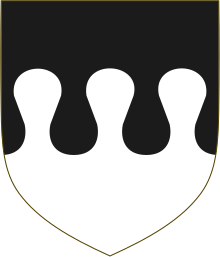Giacomo Fregoso
This article needs additional citations for verification. (June 2019) |
Giacomo Fregoso | |
|---|---|
 | |
| 10th Lifetime Doge of the Republic of Genoa | |
| In office 3 August 1390 – 6 April 1391 | |
| Preceded by | Antoniotto Adorno |
| Succeeded by | Antoniotto Adorno |
| Personal details | |
| Born | 1340 Genoa, Republic of Genoa |
| Died | 1420 Genoa, Republic of Genoa |
Giacomo Fregoso or Campofregoso (1340–1420) was a statesman who became the 10th doge of Genoa.[1]

Youth
Giacomo's father,
When Domenico was toppled in 1378, the whole Fregoso family was driven into exile.
Dogeship
In 1390, a long-lasting political crisis came to an acme and the doge Adorno had to escape Genoa and seek refuge in Savona. The population in arms gathered and chose Giacomo as the new doge on 3 August. Giacomo seem to have enjoyed a reputation as a good manager due to his commercial successes, which may explain his nomination. In 1391, Antoniotto Adorno gathered an army of 800 men to reconquer his lost position. Fregoso, not wanting to begin a civil war, refused to fight, leading to the rebels entering the city unopposed and, on April 6, Adorno was reelected doge.[3]
Ambassador
After his deposition, Giacomo was invited by doge Adorno to a great banquet in his honor and allowed to remain in the city. But rapidly, a riot in Savona drove a wedge between the two clans. As a consequence, Giacomo was sent to the castle-prison of Lerici until 1396. Two years later, he returned to the republic and was re-elected to the Council. He was also nominated as ambassador of the Republic to Florence and Pisa. After Genoa fell under French domination, he continued his diplomatic career in Milan, Rome and finally Venice.
In 1411, at the age of 71, Giacomo received the charge of reorganizing the Genoese navy in order to defend the coasts of the Republic against the raids of
References
- ISSN 2611-318X.
- JSTOR 44456590.
- ^ Piergiovanni, Vito (2012). "Law and power in Genoa at the end of the fourteenth century: on three 'councils' of Baldo degli Ubaldi" (PDF).
{{cite journal}}: Cite journal requires|journal=(help)

